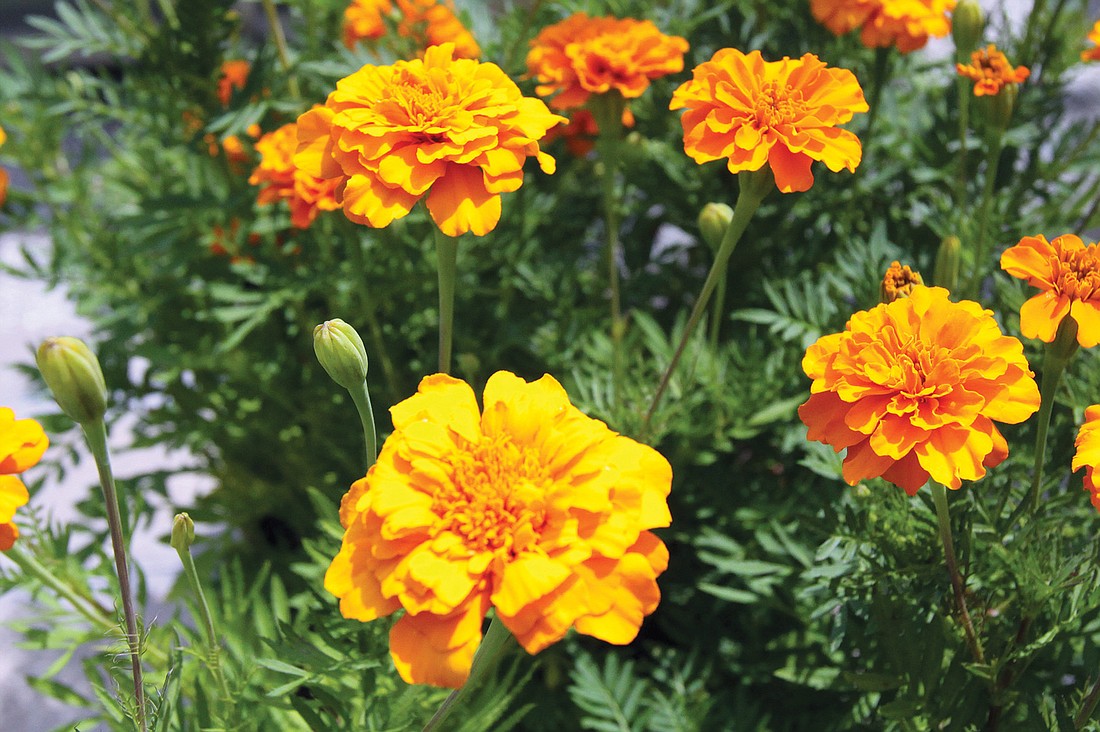- April 18, 2024
-
-
Loading

Loading

Here are some tips about what to look for when you’re at the nursery choosing plants for your landscape.
As you consider possible purchases, select cultivars with brightly colored leaves and/or flowers. Examine their foliage for signs of pest damage — holes, nibbles on leaves or stunted blooms. Don’t forget to check the underside of the foliage. Be vigilant for signs of nutritional deficiencies or diseases, such as yellow or brown patterns or spots. The stems or trunks should be sturdy and clean with smooth bark, and they should be free of damage, gouges or lesions.
When you look for plants, whether they will be for a hedge or a mass planting, or whether they will stand by themselves as specimens, you want to look for ones with compact growth and lots of sources of terminal, or “new,” growth. The only time I choose taller or somewhat leggy plants is if I want them to develop into large shrubs or small trees.
If the plant looks a little smallish for its pot, I give it the “upside-down test.” By that I mean I invert the plant and ease it out of its container to check for root development. If the roots have not penetrated all the way to the bottom of the container, the plant isn’t ready. If it has feeder roots that are reasonably well developed, I loosen them up a little before planting.
At the other end of the spectrum are plants that are “pot-bound.” These plants may have been sitting in the field too long. Their roots have grown so prolifically that they may have expanded out of the drainage holes in the pot and displaced almost all of the original soil, forming a nearly impenetrable mass. This makes them difficult to get out of the pots. If you want to plant them, you must take considerable time to loosen up the intertwined roots beforehand. Lured by their size and beauty, I recently bought some grasses that were overgrown. The prep time doubled or tripled my planting effort.
Keep in mind that the healthy plant you are evaluating has been growing in an ideal environment. It has been watered, fertilized and protected from pests and disease by the grower. You must make a commitment to continue to nurture that plant until it has made the transition to your chosen location. This will require an extraordinary amount of vigilance and care.
Rick Wielgorecki has been doing landscape consultations, installations and maintenance in Sarasota since 1977. He may be reached at 362-0600 or at [email protected].
Plant of the Month
The shrub I am focusing on this month is the ever-popular rosa sinensis, commonly known as the hibiscus. The first thing I am obligated to say is that this is a tropical plant. Because our climate is subtropical, there is a good chance that rosa will be damaged by the cold spells that we have been experiencing in recent winters.
Second, the leaves, flowers and stems of hibiscus are as attractive to a host of pests as they are to us. Additionally, they require regular feedings to keep them blooming, which they can do year-round in milder winters.
In spite of these drawbacks, I’m intoxicated by the allure of their infinite variety of bloom types and colors. And though I lost a couple because of the recent cold spells, I recently bought four more, which I hope to get established before the cool season returns. I’ll feed and spray and protect and prune them, because I can’t resist enjoying their beauty in my landscape.